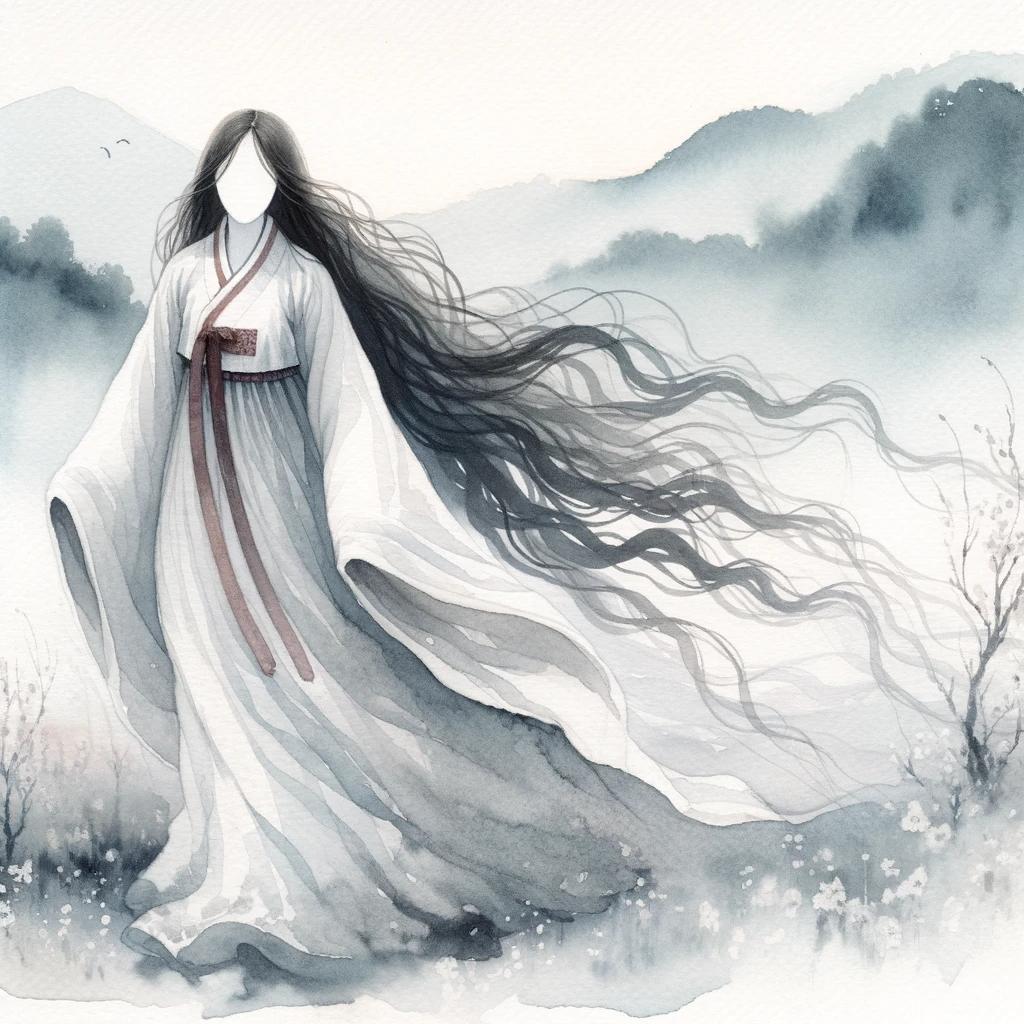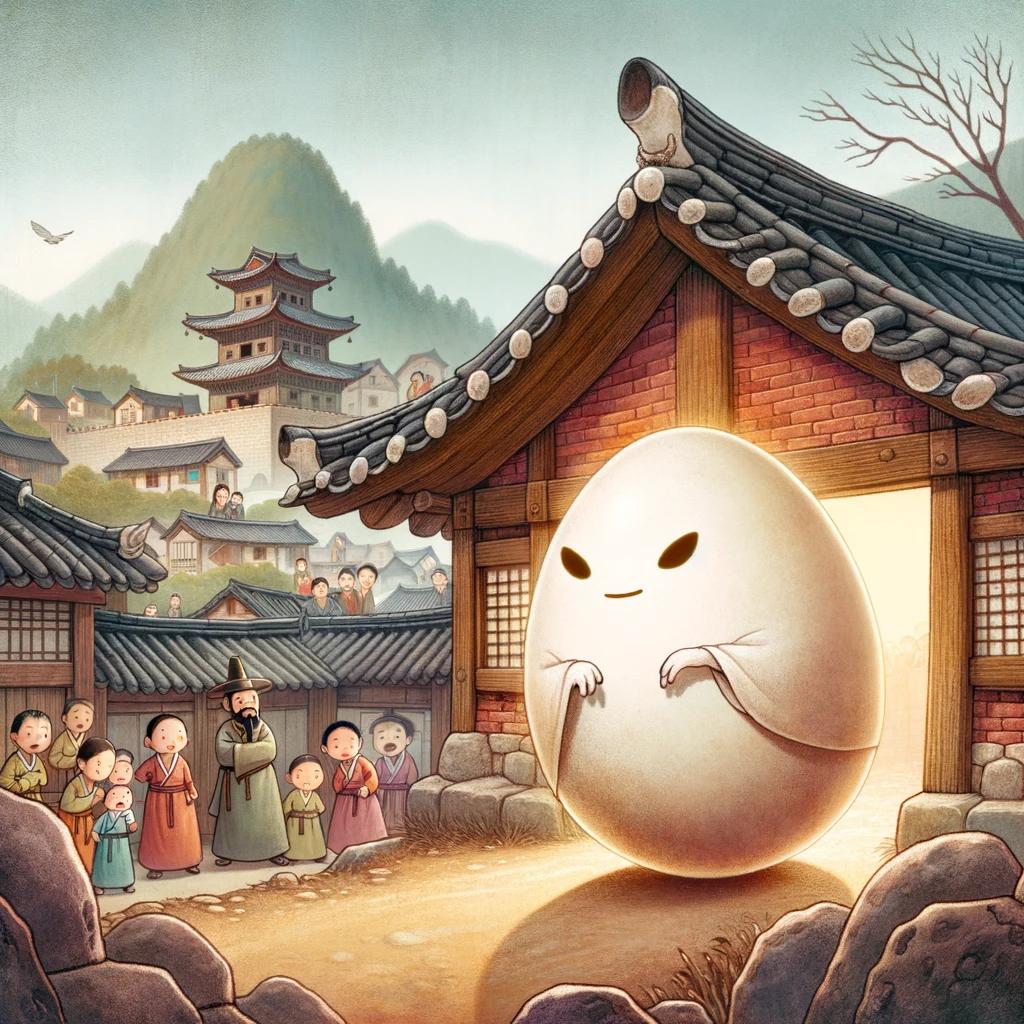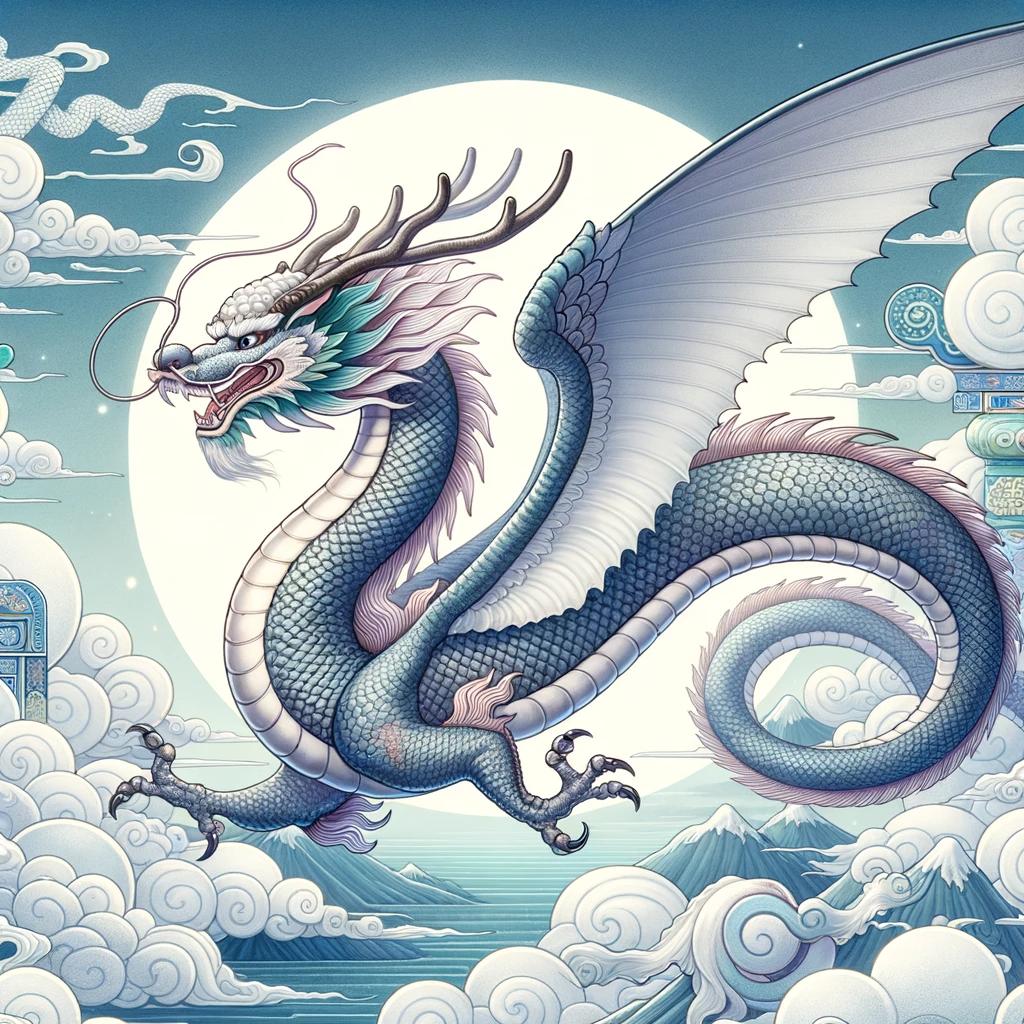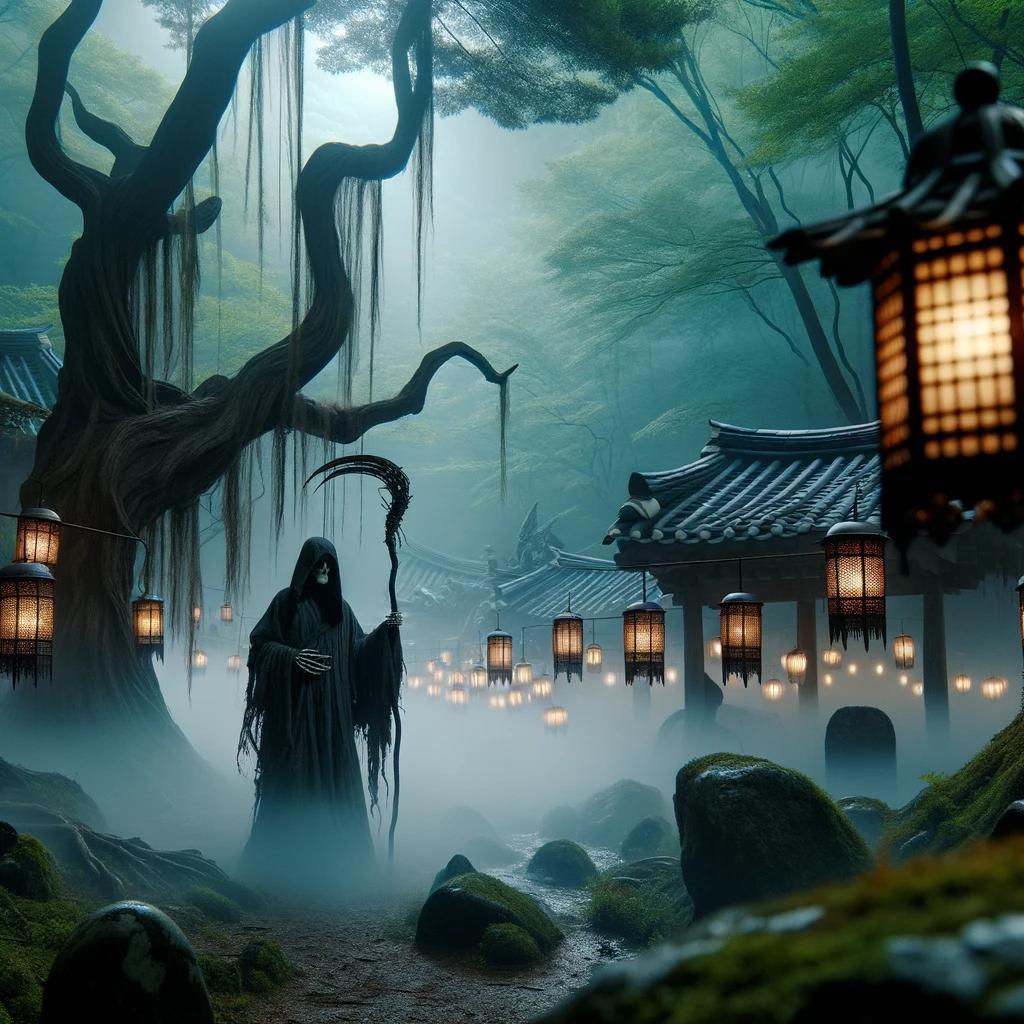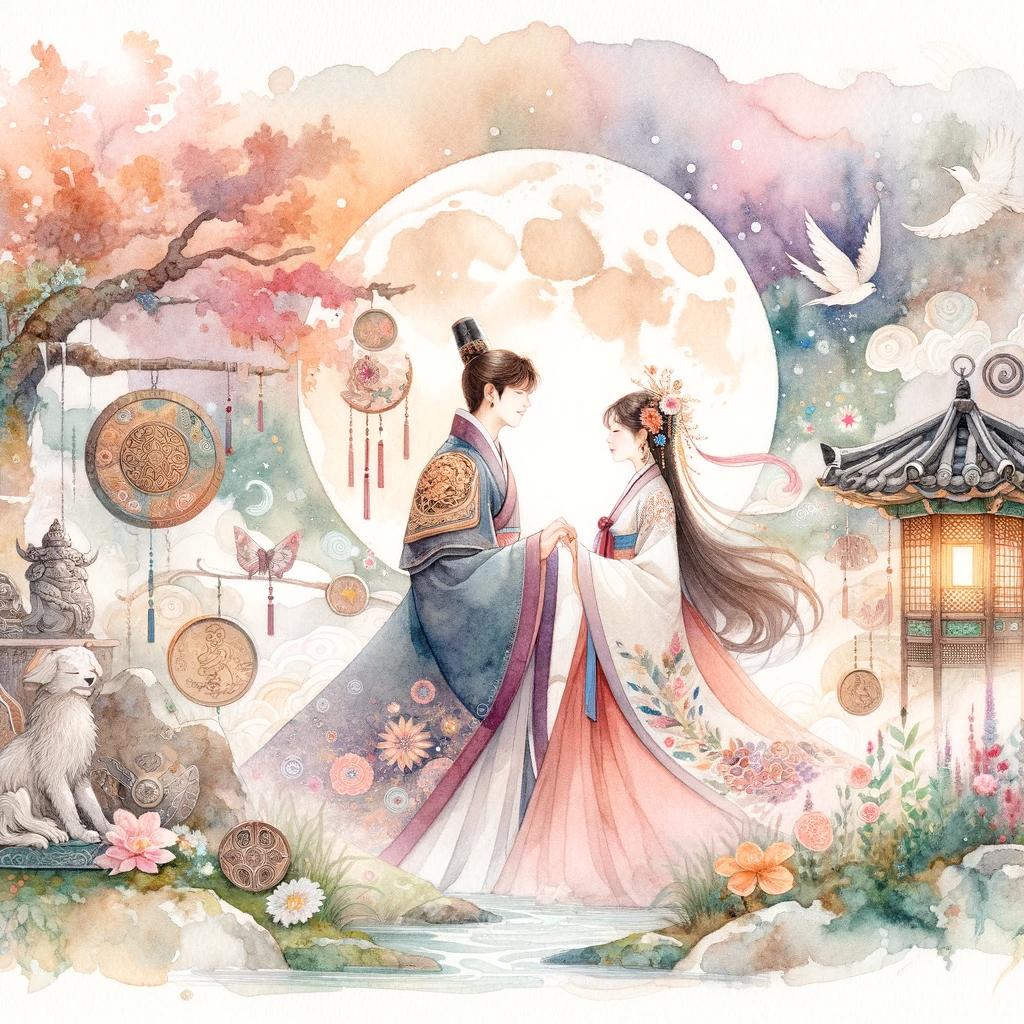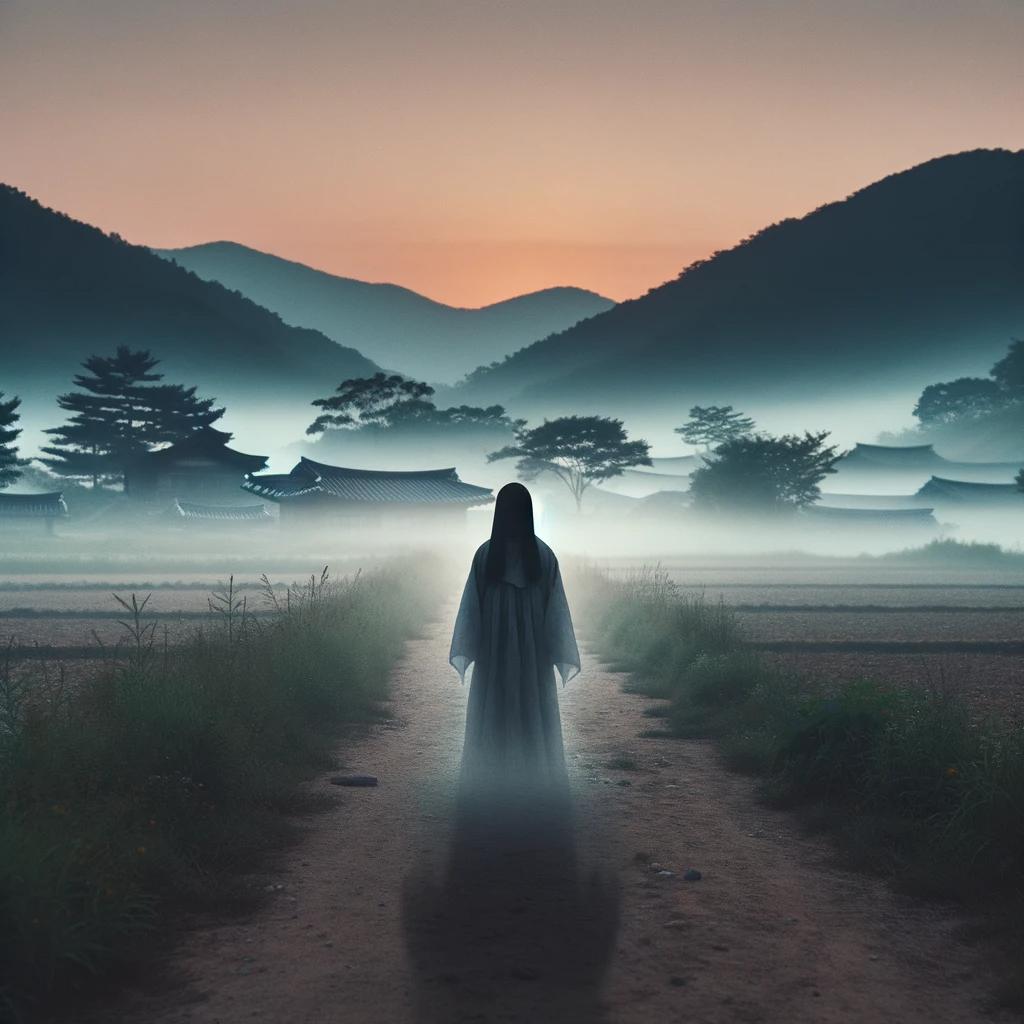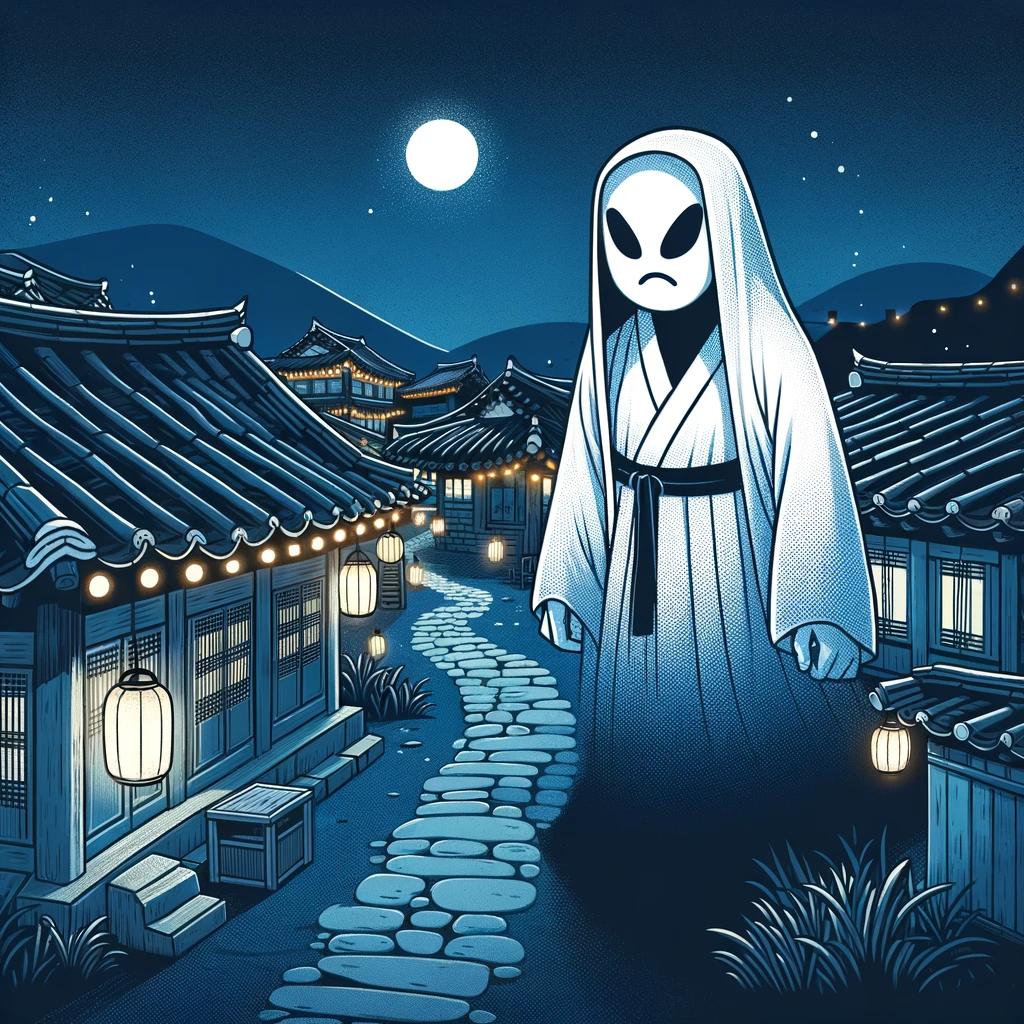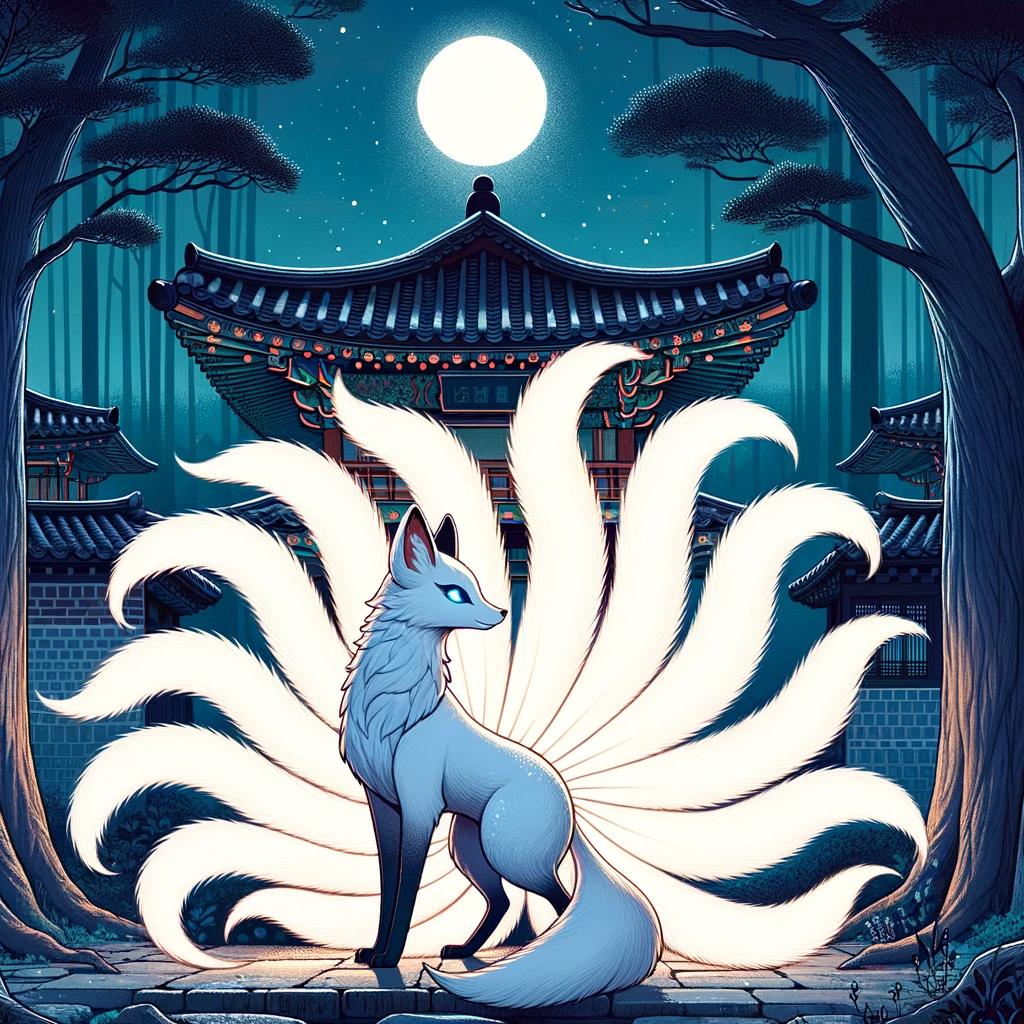Cheonyeo Gwishin: Exploring the Spine-Chilling Korean Myth
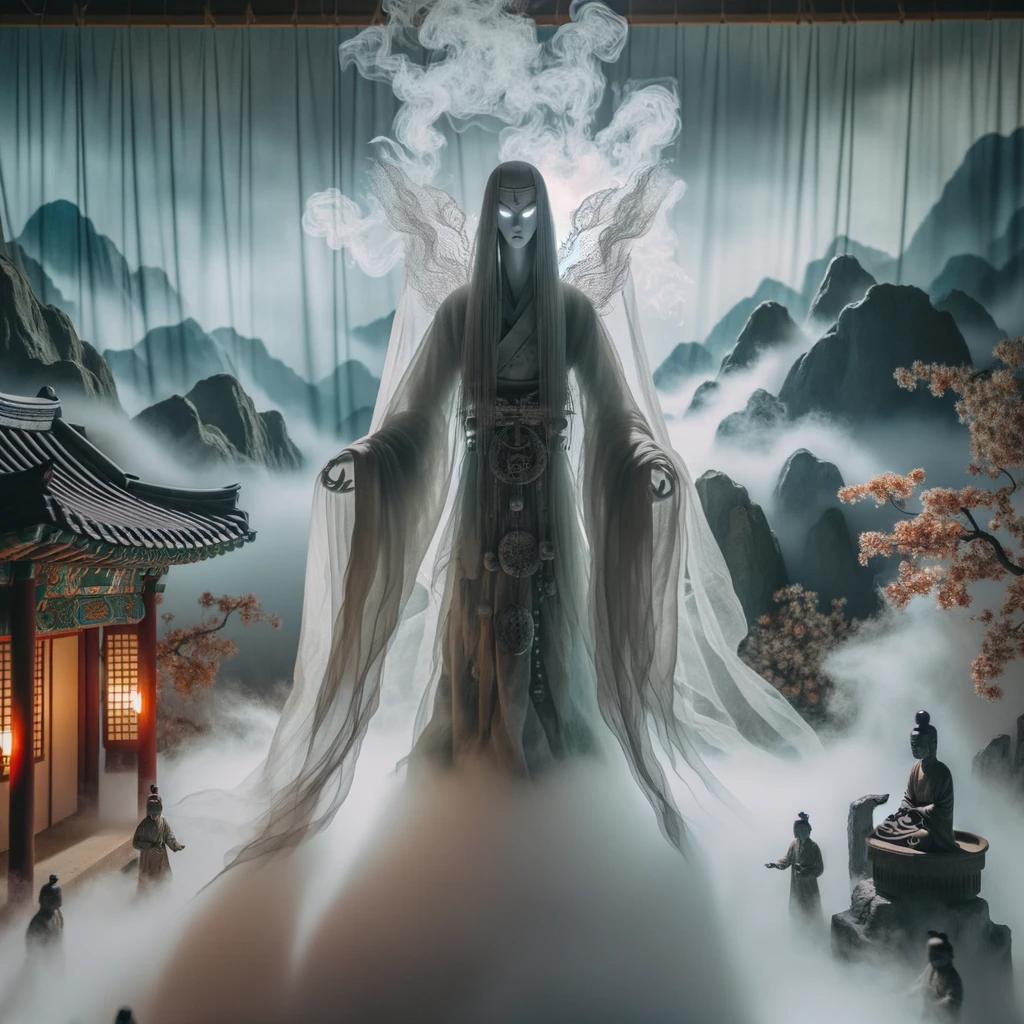
Korean folklore is filled with spine-chilling myths and legends, including the notorious Cheonyeo Gwishin. These vengeful spirits, known as the Virgin Ghost, seek revenge on those who wronged them in life.
Alongside Cheonyeo Gwishin, there are other haunting tales like the Woman with Empty Eyes and the Elevator Murderer. Let’s delve into the eerie world of Korean urban legends and explore the cultural significance of these myths.
From ghostly apparitions to terrifying rituals, the supernatural folklore of Korea continues to captivate and terrify.
Overview of Korean Folklore
Korean folklore is a treasure trove of captivating myths and legends that have been passed down through generations. Rooted in the country’s rich history and cultural beliefs, these tales offer a glimpse into the mystical and supernatural world that has both intrigued and terrified Koreans for centuries.
At the heart of Korean folklore lies a deep reverence for nature and spirits. Many of the myths revolve around celestial beings, deities, and ghosts who inhabit the realms beyond the human world.
These stories provide insights into the values, fears, and moral lessons of Korean society.
Through the exploration of various creatures and phenomena, Korean folklore reflects the interconnectedness of humans and the spiritual realm.
The tales often convey a sense of caution and respect for these powerful forces, emphasizing the consequences of disrespect or neglect.
Themes and Motifs
- Nature’s Power: Korean folklore frequently highlights the awe-inspiring power of nature, with mountains, rivers, and animals serving as significant symbols and settings for many myths.
- Supernatural Creatures: The Korean mythological pantheon features a diverse range of supernatural beings, such as gods, ghosts, demons, and shapeshifters, each with their own unique traits and stories.
- Moral Lessons: Many tales aim to impart moral teachings, offering guidance on topics such as loyalty, filial piety, humility, and the consequences of greed or arrogance.
- Symbolism: Symbolism is woven throughout Korean folklore, with objects, colors, and numbers often representing deeper meanings and cultural significance.
From enchanting tales of love and tragedy to spine-chilling encounters with spirits and ghosts, Korean folklore has captivated imaginations for centuries.
These stories continue to be celebrated and preserved as an integral part of the country’s cultural heritage, reminding us of the enduring power of storytelling and the connection between the human and spirit realms.
Introduction to Cheonyeo Gwishin Korean Myth
Welcome to the intriguing world of Cheonyeo Gwishin, a captivating Korean myth that delves into the realm of vengeful spirits and supernatural beings. These spirits, known as Gwishin, are the restless souls of the deceased who have unfinished business in the afterlife.
Among the different types of Gwishin, Cheonyeo Gwishin, also referred to as the Virgin Ghost, stands out as a figure seeking vengeance against those who wronged them in life.
In Korean culture, traditional beliefs and superstitions surrounding ghosts hold significant importance.
Rooted in shamanism, a religious practice in Korea, the concept of Gwishin describes the spirits of the departed who are trapped in the spirit world. They are believed to exist in various forms, each with its own distinct characteristics and purpose.
- Cheonyeo Gwishin: This avenging spirit, commonly known as the Virgin Ghost, seeks retribution against those who caused harm during their lifetime.
- Chonggak Gwishin: The Unmarried Bachelor Ghost represents those who died as bachelors, trapped in a state of eternal loneliness.
- Mul Gwishin: The Water Ghost is associated with bodies of water and symbolizes the spirits of individuals who met an untimely demise in aquatic environments.
- Dalgyal Gwishin: The Faceless Egg Ghost takes the peculiar form of an egg lacking facial features, embodying a mysterious presence yet to be unraveled.
- Nine Tailed Fox: A seductive and shape-shifting entity, the Nine Tailed Fox in Korean folklore possesses the ability to allure and eventually bring about the demise of unsuspecting men.
These unique forms of Gwishin carry traditional significance within Korean culture, reflecting society’s fears and beliefs surrounding the afterlife.
They have become subjects of fascination and continue to captivate both locals and visitors alike.
Exploring the Different Types of Gwishin
When delving into the intriguing realm of Korean folklore, it is essential to explore the various types of Gwishin, or ghosts, that exist within this rich cultural tapestry. Each Gwishin possesses its own unique characteristics and legends.
Let us embark on a journey through the haunting tales of Cheonyeo Gwishin, Chonggak Gwishin, Mul Gwishin, Dalgyal Gwishin, and the seductive Nine Tailed Fox.
Cheonyeo Gwishin: The Vengeful Virgin Ghost
Known as the Vengeful Virgin Ghost, Cheonyeo Gwishin is a chilling legend in Korean culture.
These spirits, adorned in traditional white mourning clothes called Sangbog, are characterized by their long, partially veiled pallid faces, vengeful eyes, and blood-stained lips. Crossing paths with Cheonyeo Gwishin is said to cause a sudden drop in temperature and an eerie sensation throughout the body.
Sightings of these ghosts have been reported in Yongin and even depicted by actors in the Korean Folk Village. The legend also extends its presence to the city of Miryang.
Chonggak Gwishin: The Unmarried Bachelor Ghost
Chonggak Gwishin, also known as the Unmarried Bachelor Ghost, represents the spirits of those who died single and without a spouse.
It is believed that these ghosts continue to wander the earthly realm in search of a partner. Though not as vengeful as their Cheonyeo counterparts, encountering a Chonggak Gwishin is still an eerie experience.
Tales and encounters with these spirits add a haunting layer to Korean urban legends.
Mul Gwishin: The Water Ghost
The Mul Gwishin, or Water Ghost, is believed to be a spirit associated with bodies of water such as rivers, lakes, and even the ocean. These ghosts are said to have met a tragic end by drowning or perishing in water-related accidents.
Often depicted as apparitions in wet clothing, Mul Gwishin evokes a sense of unease, symbolizing the eerie connection between life and water in Korean folklore.
Dalgyal Gwishin: The Faceless Egg Ghost
Dalgyal Gwishin, the enigmatic Faceless Egg Ghost, takes on the form of an egg without distinct facial features.
This mysterious entity exists within the realm of Korean myths, leaving an aura of intrigue and curiosity around its origin and purpose. Although its legends might not be as prominent as others, Dalgyal Gwishin adds a touch of enigma to the world of supernatural tales.
Nine Tailed Fox: A Seductive and Shape-Shifting Ghost
The legend of the Nine Tailed Fox encompasses a seductive and shape-shifting spirit capable of luring unsuspecting men to their demise. Often portrayed as a beautiful woman with fox features and nine tails, this ghostly creature embodies charm, power, and cunningness.
Its ability to transform and enact its devious plans sets the Nine Tailed Fox apart as one of the most intriguing and captivating entities in Korean mythology.
Exploring the different types of Gwishin in Korean folklore provides a glimpse into the captivating supernatural realm of this vibrant culture.
From the vengeful Cheonyeo Gwishin to the seductive Nine Tailed Fox, each ghostly entity offers its own tantalizing tale, leaving us both mystified and enthralled by the depths of Korean mythology.
The Legend of Cheonyeo Gwishin
The Cheonyeo Gwishin, also known as the Virgin Ghost, holds a prominent place in Korean mythology and folklore. This haunting legend is shaped by its historical background, awe-inspiring appearances, and reported sightings and locations.
Historical Background and Significance
The Cheonyeo Gwishin legend is deeply rooted in Korean society’s expectations and traditions, particularly concerning the role of women. In the past, women were responsible for producing a male heir to carry on the family lineage.
Failure to fulfill this duty was considered a great shame, potentially leading to societal ostracization. The Cheonyeo Gwishin embodies the resentment and wrath of these women who were unable to achieve this critical goal in their lifetime.
Appearance and Haunting Characteristics
The Cheonyeo Gwishin is described as a vengeful spirit dressed in traditional white mourning attire called Sangbog. Their long hair partially covers their pale face, while their vengeful eyes and blood-stained lips convey their furious intentions.
Encountering a Cheonyeo Gwishin is often accompanied by a sudden drop in temperature, sending chills down one’s spine.
Reported Sightings and Locations
There have been numerous reported sightings of the Cheonyeo Gwishin, particularly in Yongin, where actors dressed as these ghosts can be seen in the Traditional Folk Village. The eerie presence of these spirits has also been felt in the city of Miryang, where ghostly encounters have sent shivers through the local community.
Other Urban Legends in Korean Culture
In addition to the captivating myth of Cheonyeo Gwishin, Korean folklore is replete with other chilling urban legends that continue to intrigue and unsettle. These tales delve into the darker corners of Korean culture, revealing a world populated by mysterious and malevolent entities.
The Legend of the Woman with Empty Eyes
One prominent legend revolves around the Woman with Empty Eyes, believed to be the spirit of a woman who suffered a tragic and brutal demise. Legends attribute her death to a hit-and-run accident on the Jayuro road or the work of a serial killer.
Her terrifying appearance, with her eyes gouged out, serves as a haunting reminder of the violence she endured. Rumor has it that she wanders the road at night, seeking revenge against those who caused her untimely death.
The Elevator Murderer: A Warning Tale
Another bone-chilling legend centers around the Elevator Murderer, cautioning individuals about the dangers of entering elevators alone. According to the legend, if a stranger unexpectedly enters a selected floor, one must remain vigilant.
This enigmatic individual may not be who they appear to be. The story tells of a disturbed serial killer who masquerades as an ordinary person and enters elevators to find unsuspecting victims.
Typically waiting for someone to enter the elevator alone, they then press a random floor button. Once inside, they reveal their true intentions and attack their hapless victim.
Spine-Chilling Ritual: The Corner Game
A spine-chilling ritual known as the Corner Game is commonly played among Korean teenagers as a challenge or a way to experience the supernatural.
Participants enter a windowless room and cover any sources of light. They then stand in a corner, facing the wall, and repeat the phrase “Corner, corner, may I look?” three times.
After the third repetition, they quickly turn around to look behind them. According to legend, upon turning around, they may see a spirit or ghostly figure standing in the opposite corner of the room.
Some claim the spirit appears as a shadowy figure, while others insist it takes on a more terrifying form.
Intriguing and spine-chilling, these urban legends offer a glimpse into the eerie and mystifying side of Korean culture.
Whether it’s encountering the Woman with Empty Eyes, avoiding the dangers of the Elevator Murderer, or summoning spirits through the Corner Game, these tales continue to fascinate and evoke a sense of foreboding among those who dare to explore them.
Common Questions and Misconceptions about Cheonyeo Gwishin
Are Cheonyeo Gwishin real?
One common question that arises when discussing Cheonyeo Gwishin is whether these vengeful spirits are real or mere figments of imagination. While the belief in Cheonyeo Gwishin is deeply rooted in Korean folklore and urban legends, their existence in the physical world remains a subject of debate.
Skeptics argue that these legends are simply products of superstition and imagination, while believers share chilling stories of encounters with these haunting entities. Whether real or not, the fear and fascination associated with Cheonyeo Gwishin continue to captivate minds.
How do you protect yourself from encountering a Cheonyeo Gwishin?
For those concerned about encountering a Cheonyeo Gwishin, there are various beliefs and practices aimed at protection. According to Korean folklore, carrying a bag of red beans or wearing red threads can act as a safeguard against their wrath.
Burning incense or reciting protective chants are also believed to ward off these spirits. Additionally, avoiding places associated with their sightings, such as haunted locations or specific regions, may reduce the likelihood of encountering a Cheonyeo Gwishin.
However, it is important to note that these protective measures are rooted in beliefs and may not guarantee complete protection.
Can Cheonyeo Gwishin be appeased or helped?
The concept of appeasing or helping Cheonyeo Gwishin is a complex aspect of Korean folklore. According to tradition, offering prayers, rituals, or performing specific actions can help appease these restless spirits.
Lighting incense, setting up altars, or performing ancestral rites are believed to provide solace to their tormented souls. However, it is crucial to approach these rituals with respect and proper understanding of the cultural context.
It is important to note that each Cheonyeo Gwishin may have different motivations and appeasement methods, and experts in Korean folklore can provide further guidance on engaging with these spirits.
Cultural Significance and Impact of Korean Myths and Legends
The myths and legends of Korea hold immense cultural significance and have a profound impact on society.
These stories, including the fascinating Cheonyeo Gwishin Korean myth, serve as a reflection of the beliefs, fears, and values of the Korean people.
Korean myths and legends play a crucial role in preserving and passing down the cultural heritage of the country.
They contribute to the collective identity and sense of pride among Koreans, serving as a reminder of their rich history and traditions.
These stories also have a substantial impact on various aspects of Korean society, including literature, art, film, and entertainment.
They inspire countless works of fiction, poetry, and visual arts, providing a source of inspiration for creative minds. Additionally, these myths and legends have served as the basis for numerous movies, dramas, and television shows, further perpetuating their influence and cultural significance.
Furthermore, the enduring popularity of Korean myths and legends, such as Cheonyeo Gwishin, attracts both domestic and international tourists. People from all over the world are fascinated by the supernatural elements, intriguing characters, and chilling narratives found within Korean folklore.
This interest has led to the development of themed attractions, cultural festivals, and exhibitions that showcase the captivating world of Korean myths and legends.
Moreover, Korean myths and legends contribute to the overall understanding and appreciation of the diverse cultures around the world.
They provide insights into the belief systems, societal norms, and historical contexts of the Korean people, fostering cross-cultural understanding and promoting dialogue.
In conclusion, the cultural significance and impact of Korean myths and legends, including the captivating Cheonyeo Gwishin Korean myth, cannot be overstated.
They serve as a valuable part of Korea’s cultural heritage, influencing various forms of artistic expression and attracting curiosity from both locals and foreigners. These stories are a testament to the power of storytelling and its ability to shape and preserve a society’s identity and traditions.
.











